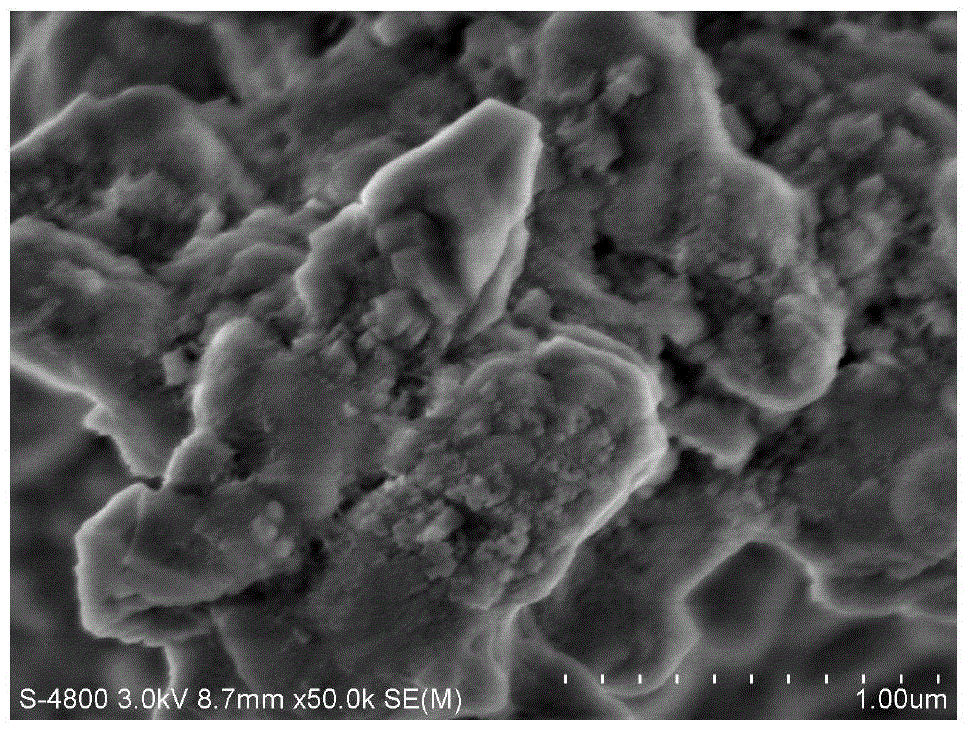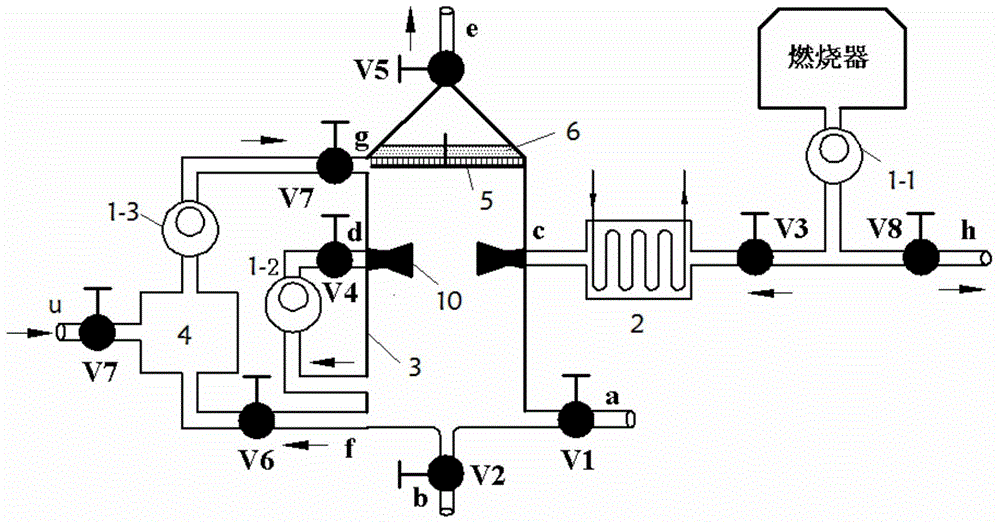Algae-char-impact-tower-based mercury removal method and preparation method of algae char
A seaweed coke and mercury removal technology, applied in separation methods, chemical instruments and methods, coke ovens, etc., can solve problems such as lack of research on adsorbent stability and adsorption mechanism, inability to obtain large-scale industrial applications, and unbearable for enterprises. Achieve the effect of no secondary pollution, wide source and simple process
- Summary
- Abstract
- Description
- Claims
- Application Information
AI Technical Summary
Problems solved by technology
Method used
Image
Examples
Embodiment 1
[0059] Dry the seaweed naturally in a ventilated state and chop it into 100-mesh seaweed powder, then put it into a temperature-controlled stirring tank, stir with water at 60°C for 2 hours, and repeat five times. Water and nitric acid were used as a mixed solvent (the mass percent of nitric acid in the mixed solvent was 10%), stirred at 40° C. for 6 hours, filtered, and then the seaweed was naturally dried for 240 hours in a ventilated state. The naturally dried seaweed was dried in a temperature-controlled drying oven at 105° C. for 8 hours to obtain anhydrous seaweed. Anhydrous seaweed is crushed into seaweed powder with a particle size of 100 mesh and placed in a tube furnace. Under a mixed atmosphere of CO2 and N2 with a volume ratio of 1:2, it is pyrolyzed at 500°C for 15 minutes, cooled to room temperature, and seaweed is obtained. Production of biomass char. The biomass coke made from seaweed was crushed into 100 mesh particles, soaked in ammonium metavanadate solutio...
Embodiment 2
[0061] Dry the seaweed naturally in a ventilated state and chop it into 100-mesh seaweed powder, then put it into a temperature-controlled stirring tank, stir with water at 80°C for 2 hours, and repeat five times. Water and nitric acid were used as a mixed solvent (the mass percent of nitric acid in the mixed solvent was 20%), stirred at 60° C. for 6 hours, and after filtering, the seaweed was naturally dried for 240 hours under ventilated conditions. The naturally dried seaweed was dried in a temperature-controlled drying oven at 105° C. for 8 hours to obtain anhydrous seaweed. Anhydrous seaweed is crushed into seaweed powder with a particle size of 100 mesh and placed in a tube furnace, under a mixed atmosphere of CO2 and N2 volume ratio of 1:1, pyrolyzed at 500°C for 15 minutes, cooled to room temperature to obtain seaweed Production of biomass char. The biomass coke made from seaweed was crushed into 100-mesh particles, soaked in a 5% sodium metavanadate solution for 12 h...
Embodiment 3
[0063] The seaweed was naturally dried under ventilation and chopped into 150-mesh seaweed powder, then put into a temperature-controlled stirring tank, stirred with water at 80°C for 2 hours, and repeated five times. Water and nitric acid were used as a mixed solvent (the mass percent of nitric acid in the mixed solvent was 25%), stirred at 80°C for 6 hours, filtered, and the seaweed was naturally dried for 240 hours in a ventilated state. The naturally dried seaweed was dried in a temperature-controlled drying oven at 105° C. for 8 hours to obtain anhydrous seaweed. Anhydrous seaweed is crushed into seaweed powder with a particle size of 100 mesh and placed in a tube furnace. Under a mixed atmosphere of CO2 and N2 with a volume ratio of 1:2, it is pyrolyzed at 700°C for 15 minutes, cooled to room temperature, and seaweed is obtained. Production of biomass char. The biomass coke made from seaweed was crushed into 150 mesh particles, soaked in 10% sodium metavanadate solution...
PUM
| Property | Measurement | Unit |
|---|---|---|
| pore size | aaaaa | aaaaa |
Abstract
Description
Claims
Application Information
 Login to View More
Login to View More - R&D
- Intellectual Property
- Life Sciences
- Materials
- Tech Scout
- Unparalleled Data Quality
- Higher Quality Content
- 60% Fewer Hallucinations
Browse by: Latest US Patents, China's latest patents, Technical Efficacy Thesaurus, Application Domain, Technology Topic, Popular Technical Reports.
© 2025 PatSnap. All rights reserved.Legal|Privacy policy|Modern Slavery Act Transparency Statement|Sitemap|About US| Contact US: help@patsnap.com



